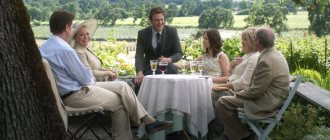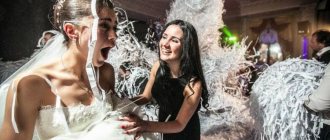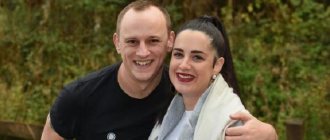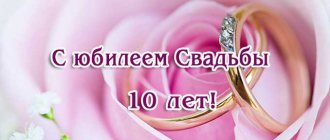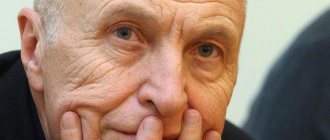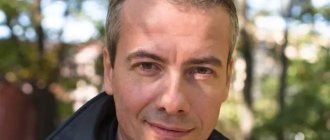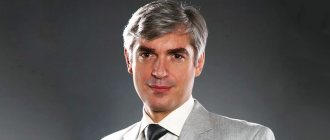C student, musician, football player: the childhood of Andrei Tarkovsky
Andrei Tarkovsky with his mother Maria Vishnyakova as a child. 1933. Zavrazhye, Kady district, Kostroma region. Photo: diddlybop.ru
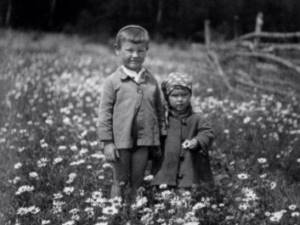
Andrei Tarkovsky with his sister Marina. 1936. Tuchkovo, Moscow region. Photo: diddlybop.ru
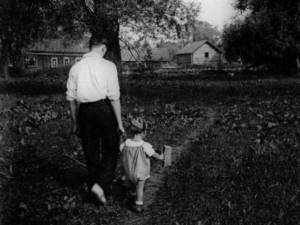
Andrei Tarkovsky with his father Arseny Tarkovsky as a child. Photo: diddlybop.ru
Andrei Tarkovsky was born on April 4, 1932 in the village of Zavrazhye, Kostroma Region. The director's father, Arseny Tarkovsky, was a famous poet who translated poems by Georgian, Turkmen and Azerbaijani writers. He communicated closely with Anna Akhmatova, Korney Chukovsky and Boris Pasternak. The poet met his first wife, Maria Vishnyakova, in Moscow, while studying at the Higher Literary Courses at the All-Russian Union of Poets. She studied with Tarkovsky in the same class. In February 1928 they got married. In addition to Andrei Tarkovsky, they had a daughter, Marina.
When Andrei Tarkovsky was three years old, his father left the family and married a second time. The parents divorced without scandal and maintained friendly relations: the father settled on a nearby street and often visited the children.
In 1939, Andrei Tarkovsky went to school. In elementary school, he studied well: even before classes began, his mother taught him to write and read. Soon the Great Patriotic War began, and the family was evacuated to the city of Yuryevets. Marina Tarkovskaya in her book “Fragments of the Mirror” wrote: “Yurievets military... A room with two windows in house number 8 on Engels Street. A tree opposite, splashing its branches during a summer thunderstorm. A tiled bed on which we warmed up in the cold. Our plane landed on the ice of the Volga. A children's library with its special smell of ink and well-read books.” During the evacuation, my mother got a job as an artistic director at a local elementary school, preparing and leading concerts. My father volunteered for the front and wrote reports of military operations for newspapers.
In 1943, the mother and her children returned to Moscow. At this time, Maria Vishnevskaya got a job as a proofreader at the First Model Printing House, one of the largest printing enterprises in the USSR. She worked there all her life. Tarkovsky returned to his former school. He studied with the future poet Andrei Voznesensky. The teenagers lived nearby and played football together after school. Later, Voznesensky dedicated the poem “Tarkovsky at the Gate” to his friend. The poet recalled: “Against the gray background of our class, he stood out for his intelligence. He even dressed very strangely, he had an orange jacket, and there was no money to make it according to his height, so it was more like a short coat.”
The mother wanted to give her son a comprehensive education. Tarkovsky attended a painting class and studied at a music school: he learned to play the piano and could perform works by ear - matching notes to a heard melody. There was no instrument at home, the young man played only in class, but quickly learned complex sonatinas and preludes, and performed at school concerts. Later Andrei Tarkovsky said: “I have the impression that I was very wrong when I did not continue my musical education. In general, I really regret that I didn’t become a musician.”
However, Tarkovsky was not an excellent student at secondary school. In eighth grade he received only three B's: in literature, English and Russian. In other subjects - C grades.
Andrei was not that quiet, sickly, intelligent boy who is usually beaten at school and in the yard. It was a hurricane, a whirlwind, consisting of jumping, tomfoolery, tarzan screams, climbing on roofs, unexpected ideas, singing, skiing down steep mountains and I don’t know what else.
Sister Marina Tarkovskaya, "Shards of the Mirror"
In high school, Andrei Tarkovsky decided to become an actor and planned to enter drama school. His father dissuaded him from this; in a letter in 1950, he convinced Tarkovsky: “Here is my advice: be sure to finish school. Enter a higher educational institution, get any education and work for at least a year in this (exact knowledge) field, and then, if the need for art remains (will remain if the talent exceeds the ability of the amateur variety) - do anything, even study at an acting college.” . Andrei Tarkovsky listened to his father and in 1951 entered the Arabic department of the Moscow Institute of Oriental Studies.
Biography of Tarkovsky
Andrei Tarkovsky was born on April 4, 1932 in the small village of Zavrazhye (Kostroma region). He grew up and was brought up in an educated family.
The director's father, Arseny Alexandrovich, was a poet and translator. Mother, Maria Ivanovna, was a graduate of the Literary Institute. In addition to Andrey, his parents had a daughter, Marina.
Childhood and youth
A few years after Andrei’s birth, the Tarkovsky family settled in Moscow. When the boy was barely 3 years old, his father left the family for another woman.
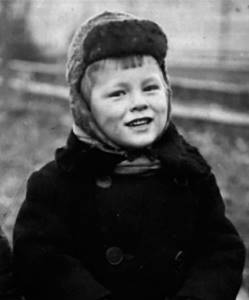
As a result, the mother had to take care of the children alone. The family often lacked the basic necessities. At the beginning of the Great Patriotic War (1941-1945), Tarkovsky, along with his mother and sister, moved to Yuryevets, where their relatives lived.
Life in Yuryevets left a significant mark on the biography of Andrei Tarkovsky. Later, these impressions will be displayed by him in the film “Mirror”.
A couple of years later, the family returned to the capital, where he continued to go to school. An interesting fact is that his classmate was the famous poet Andrei Voznesensky. At the same time, Tarkovsky attended a music school to study piano.
In high school, the young man studied drawing at a local art school. Having received the certificate, Andrey successfully passed the exams at the Moscow Institute of Oriental Studies in the Arabic department.
Already in the first year of study, Tarkovsky realized that he was in a hurry with his choice of profession. During that period of his biography, he got involved with bad company, for which reason he began to lead an immoral lifestyle. Later he admits that he was saved by his mother, who helped him get a job in a geological party.
As a member of the expedition, Andrei Tarkovsky spent about a year in the remote taiga, far from civilization. After returning home, he entered VGIK in the directing department.
From a slacker to a VGIK director
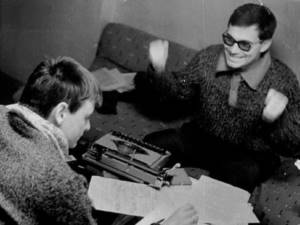
Andrei Tarkovsky (left) and director and screenwriter Andrei Konchalovsky. Photo: m24.ru
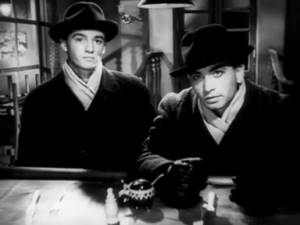
Still from the short film “The Killers” by Andrei Tarkovsky, Marika Beicu and Alexander Gordon (1956)
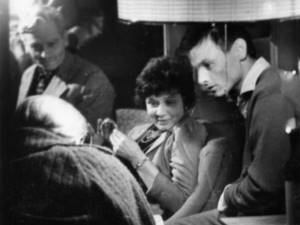
Andrei Tarkovsky (right) and cameraman Margarita Pilikhina on the set of Marlen Khutsiev’s feature film “I’m Twenty Years Old” (“Ilyich’s Outpost”). Photo: Peryan Henrietta / Cinema Museum, Moscow
Andrei Tarkovsky was of little interest in studying at the university: he rarely appeared at lectures. At this time, the director became a regular at Broadway - Gorky Street (today Tverskaya) in Moscow, where the city's youth gathered. Marina Tarkovskaya recalled: “...my mother was alarmed - Andrei’s fate, as it seemed to her, was under threat. She saw only vulgarity in styling (we now equate it with social protest) and was afraid that idleness would ruin Andrei. Mom began to look for an opportunity to assign him to some kind of business, remove him from Moscow, snatch him from. It was then that the young man first thought about a career as a director. Tarkovsky studied at the Institute of Oriental Studies for a year: in the summer of 1952 he was expelled for poor academic performance.
His mother got him a job at the Central Research Geological Prospecting Institute for Non-Ferrous and Precious Metals - NIGRI gold. Through friends, I managed to get Tarkovsky to be taken on one of the expeditions to collect rock samples. In May 1953, he went to Siberia - to the Turukhansky district of the Krasnoyarsk Territory. Andrei Tarkovsky said: “This remains the best memory of my life. I was 20 years old then... All this strengthened my decision to become a film director.”
Tarkovsky spent a year away from civilization. In 1954, he returned to Moscow and spent the summer with his family in Kratovo, near Moscow, where his mother rented a dacha. Dmitry Rodichev, a student in Lev Kuleshov’s workshop at VGIK, was relaxing in the house next door. They became friends. Rodichev talked a lot about the institute and, when he learned about Tarkovsky’s hobby, advised him to enter VGIK. The future director began to prepare for the entrance examination: he wrote a review of the film, memorized an excerpt from “War and Peace,” and composed an autobiography.
In 1954, Andrei Tarkovsky passed all the exams and became a student at VGIK. The famous director Mikhail Romm took him to his workshop. Together with Tarkovsky, Vasily Shukshin also passed the selection.
In February 1956, Nikita Khrushchev made a report on the debunking of Stalin's personality cult at the 20th Party Congress. The thaw has begun. Director Alexander Gordon recalled: “At VGIK, too, [unrest began] - there were debates in the assembly hall for two days. Not everyone was excited. Tarkovsky was seething and indignant and was ready to speak out “in defense of renewal,” but quickly suppressed his emotions: the talking shop that was taking place was stupidly incompetent.” In the same year, Tarkovsky, together with classmate Marika Beicu, made his first short film, “The Assassins,” based on the story of the same name by Ernest Hemingway.
Tarkovsky’s next course work was the film “There will be no layoffs today.” The idea for the film was suggested by Mikhail Romm: he found a newspaper article about excavator workers who accidentally discovered German shells in Kursk. While working on the film, Tarkovsky met freshman Andrei Konchalovsky. In the book “Low Truths,” Konchalovsky wrote: “I walk in, a shaggy guy is sitting, and excavators are crawling across the screen. I think: “What nonsense?!” This is my first memory of Tarkovsky.”
In 1960, Tarkovsky, together with Konchalovsky, wrote the script for the film “The Rink and the Violin” about the friendship of a little musician and the skating rink driver. The text was bought by the cinema at Mosfilm. It was a big event: the student script was ready to be filmed at a professional film studio. The cameraman was Vadim Yusov. The film was called an “exquisite camera sketch”: Yusov filmed sun glare, reflections in mirrors and puddles, and used bright colors. The work on the film was credited to Tarkovsky at VGIK as a diploma. In 1961, The Rink and the Fiddle won first prize at the New York Student Film Festival.
The future master was born on April 4, 1932 in the village of Zavrazhye (Kostroma region) in the family of the writer Maria Vishnyakova and the famous poet Arseny Tarkovsky. Andrey always missed his father. He abandoned his son when the boy was only three years old, leaving the upbringing of two children on the shoulders of his ex-wife. The Great Patriotic War found little Andrei in the second grade of a capital school. The family had to return to the Volga, to Yuryevets, to their mother’s relatives. Subsequently, it was the house in Yuryevets that would become for the artist the image of his father’s house in the film “Mirror” (the Tarkovsky house-museum would later be opened there). In 1943, the Tarkovskys returned to the capital. Andrey studies in high school (very mediocre), draws and plays the piano. In 1951, 19-year-old Tarkovsky entered the Arabic department of the Middle Eastern Faculty of the Moscow Institute of Oriental Studies. But after two years he quits his studies. “I went through a difficult moment... I fell into bad company... My mother saved me in a very strange way - she got me into a geological party. I worked there as a collector, almost a worker, in the taiga, in Siberia. And this remained the best memory of my life,” Tarkovsky recalled. Upon returning to Moscow, 22-year-old Tarkovsky entered VGIK in the workshop of director Mikhail Romm (according to him, “the choice was more random than deliberate”). At the age of 24, he directed his first course short film, “The Killers.” His joint thesis work with Andron Konchalovsky, “The Rink and the Violin,” created under the influence of the French classic Albert Lamorisse’s “The Red Ball,” received the first award at the student film festival in New York. “The main truth is in the texture, so that it can be seen that everything is genuine: stone, sand, sweat, cracks in the wall. There should be no makeup or plaster,” Konchalovsky recalls the ideas about cinema with which they graduated from VGIK.
Already his first full-length work, “Ivan’s Childhood,” brings world fame to the 30-year-old aspiring Soviet director Tarkovsky. In 1962, the film received the Golden Lion at the Venice Film Festival. In 1966, the director staged the historical drama “Andrei Rublev”, which became a classic of world cinema. Andrei Tarkovsky's subsequent films are also some of the best films in the entire history of Russian cinema - “Solaris”, “Mirror”, “Stalker”. But in the Soviet Union a hail of criticism and hatred falls upon him. Tarkovsky's creative freedom irritates Goskino - the director is practically not allowed to shoot. And abroad, Tarkovsky is admired by film legends such as Federico Fellini and Ingmar Bergman. The films of the Soviet director are awarded prestigious film awards: “Solaris” receives a special prize at the Cannes Film Festival, “Nostalgia,” filmed by the director in Italy, is also awarded in Cannes.
In 1984, the 52-year-old master, while in Italy, decided not to return to the USSR. A year later, he receives a terrible diagnosis: lung cancer. Seriously ill, he is filming his last film in Sweden - the parable “Sacrifice”. The film received the Grand Prix at the Cannes Film Festival and the British Academy of Film and Television Arts Award. At the peak of professional triumph, on December 29, 1986, 54-year-old Andrei Tarkovsky dies in Paris. He is buried in the Russian cemetery of Sainte-Genevieve-des-Bois in the vicinity of Paris.
A happy accident and an instant success: “Ivan’s Childhood”
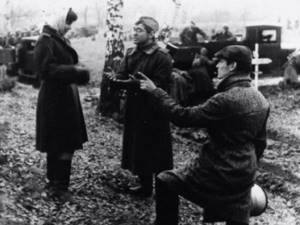
From left to right: actress Valentina Malyavina, director and screenwriter Andrei Konchalovsky and Andrei Tarkovsky on the set of Andrei Tarkovsky’s feature film “Ivan’s Childhood.” Photo: tvkinoradio.ru
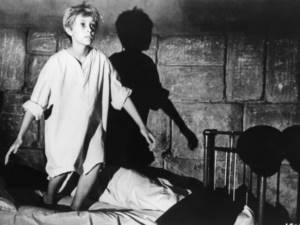
Nikolai Burlyaev as Ivan in Andrei Tarkovsky’s feature film “Ivan’s Childhood” (1962)
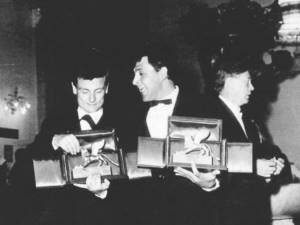
Andrei Tarkovsky (left) with the Golden Lion at the Venice Film Festival. 1962. Venice, Italy. Photo: tvkinoradio.ru
Immediately after graduating from VGIK, Andrei Tarkovsky was invited to work at Mosfilm. In 1961, he applied for the filming of the film “Andrei Passion” about the icon painter Andrei Rublev. The idea was suggested to the director by actor Vasily Livanov, who wanted to play the main role in the film. Tarkovsky again worked on the script together with Konchalovsky: as planned, the film was supposed to consist of several short stories about the life of medieval Rus'. The film was approved, but preparation took three years: it was necessary to study the history of this period, build large-scale sets, and select actors. At the same time, the director worked on other projects.
In 1962, Andrei Tarkovsky made the film “Ivan’s Childhood” based on the story by Vladimir Bogomolov. The story of an orphan boy who is obsessed with hatred of the Nazis was first entrusted to director Eduard Abalov. However, work on the film was stopped: the Mosfilm artistic council criticized the footage. At Romm's request, the film was given to Tarkovsky. The director completely rewrote the script in three weeks. He abandoned the battle scenes: now there were no tanks or extras in the film. The director, using close-ups, shifted the focus to the boy’s inner world. Tarkovsky said: “In Ivan’s Childhood I tried to analyze... the state of a person affected by war. If a person is destroyed, then a violation of logical development occurs, especially when it concerns the psyche of a child... He [the film’s hero] immediately appeared to me as a destroyed character, shifted by the war from his normal axis.” To contrast childhood and war, Tarkovsky alternated Ivan’s dream with reality in the film: the boy dreamed of a happy time with his mother, which he was deprived of.
Andrei Tarkovsky again invited cameraman Vadim Yusov to work on the film. He had to invent new shooting techniques along the way in order to realize the director’s plans. One of the most difficult was the kiss scene over the ravine. Tarkovsky insisted: the camera should first be above the ground, then immediately descend into the ditch, and then rise again, but to eye level. Yusov came up with the idea of using a cradle that was attached to the camera crane. This was the only way the camera could be below ground level.
Filming lasted five months. The main role was played by fifteen-year-old Nikolai Burlyaev, who had already starred in Konchalovsky’s course work “The Boy and the Dove.” In 1962, “Ivan’s Childhood” was shown on the big screen for the first time. The film brought Tarkovsky instant success: in the same year he received the Golden Lion of St. Mark at the Venice International Film Festival. The French writer Jean-Paul Sartre was at the show in Moscow.
...Tarkovsky's film seems specifically Russian to me. Here in the West we have come to appreciate the fast-paced world of Godard and the slowness of Antonioni. But the combination of these two speeds from a director who does not draw inspiration from the works of either author is new to us. The director conveys wartime in its unbearable slowness and in the same film jumps from era to era, refusing to develop storylines in order to return to them at another moment or at the moment of their death.
Jean-Paul Sartre, letter to the editor of the newspaper Unita, October 9, 1963
“The Passion for Andrei”: the struggle for the film “Andrei Rublev”
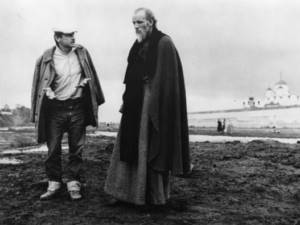
Andrei Tarkovsky (left) and actor Anatoly Solonitsyn on the set of Andrei Tarkovsky's feature film "Andrei Rublev." Photo: Cinema Museum, Moscow
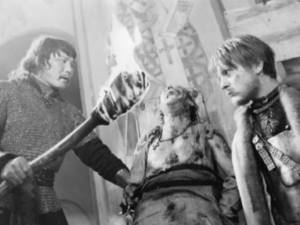
Still from Andrei Tarkovsky’s feature film “Andrei Rublev” (“The Torture of Patrikey”) (1966)
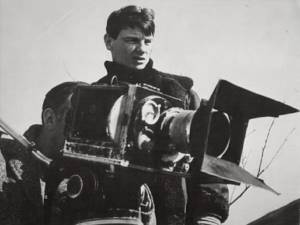
Andrei Tarkovsky (right) and cameraman Vadim Yusov at the camera on the set of Andrei Tarkovsky's feature film "Andrei Rublev". Photo: Cinema Museum, Moscow
In 1964, Tarkovsky began working on “Andrei Rublev”: all preparatory work on the film was completed. The director spent a long time selecting actors. Stanislav Lyubshin, Innokenty Smoktunovsky and Vladimir Vysotsky wanted to play Andrei Rublev. But Tarkovsky refused everyone: they were too famous. As a result, the actor of the Sverdlovsk Drama Theater Anatoly Solonitsyn was approved for the main role.
In his diary on April 1, 1966, Tarkovsky wrote: “In a film about Rublev, the last thing I want is to absolutely accurately restore the circumstances of the life of the monk Andrei Rublev. I want to express the suffering and languor of the artist’s spirit as I understand it, based on the time and the problems associated with our time.”
The film consisted of eight short stories, filming began with the last one - “The Bell”. According to the plot, the icon painter Andrei Rublev kept a vow of silence and broke it only at the end of the picture, saying: “Here we go together. You cast bells, I paint icons.” The director wanted to achieve believability in everything - actor Anatoly Solonitsyn three months before shooting the scene, Tarkovsky forbade him to talk. And Yuri Nikulin, who played the monk Patrikey in the film, screamed during the torture scene because he was really in pain: diesel fuel accidentally dripped from a torch onto his feet. Nikolai Burlyaev, who played the role of the young master Boriska, had to drive off the cliff several times before the required take. The actor recalled: “We filmed, naturally, without rehearsal. Right in the double, with my skin I counted all the hillocks, stones, roots, stumps, flew through a huge bush. The eyes are dark from pain and cold, blood is oozing from the sleeve, but we must finish the scene.”
We are filming footage of the Tatar raid. Suddenly I see Andrei carrying geese from somewhere and about to throw them in front of the camera. Why, why, how did these geese appear? Andrei could not explain then, and only repeated: “We need it, well, we need it.” But it’s not our rules to argue on the court. I’m filming, and Andrei throws these geese... On the screen they struck me with awkwardness and helplessness.
Cameraman Vadim Yusov, “Andrei Tarkovsky. World Cinema Stalker"
To recreate the atmosphere of the 15th century, the film was shot in Vladimir, Suzdal, Pskov - buildings of medieval Rus' were preserved there. Some of the scenery, for example the bell pit, was assembled at Mosfilm. They were so reliable that after filming they were offered to be transferred to museums.
In 1966, the film studio’s artistic council viewed the footage. Andrei Tarkovsky was asked to change the name of the film: instead of “The Passion for Andrei” to “Andrei Rublev”. The director relented. But he was presented with a whole list of “serious mistakes and shortcomings”: too long episodes, unnecessary “naturalistic excesses” and insufficient emphasis on Rublev’s work. The approval of the film was delayed. Secretary of the regional committee of the CPSU Seraphim Surnichenko wrote: “Instead of instilling in people a sense of patriotism... the audience is presented in a concentrated form with scenes and pictures of evil, desecration of man, of that which is sacred.”
To take his mind off the bureaucracy, in 1968 Tarkovsky decided to help his friend Alexander Gordon with the script for his film “Sergei Lazo” about the civil war in the Far East.
In 1969, there was confusion: the film “Andrei Rublev” was accidentally sold to the French film distributor Alex Moskovich and he showed the film at the Cannes Film Festival. Then “Andrey Rublev” received the FIPRESCI award. The director's film was received enthusiastically. The Le Monde newspaper wrote: “Andrei Tarkovsky does honor to Soviet cinematography. If Tarkovsky managed to make such a film, it means that Dovzhenko and Eisenstein have found a worthy successor.” Then the film was allowed in the USSR - the premiere screening took place in 1971. The film was shown in a truncated form: it was 30 minutes shorter than the author’s version.
They wanted to destroy the full version of the film, but the film was saved by editor Lyudmila Feiginova: she hid boxes of film in Mosfilm storerooms. Viewers saw the original version of the film only in 1988.
Personal life
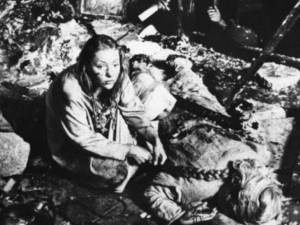
Irma Rausch as the Little Fool in Andrei Tarkovsky's feature film "Andrei Rublev" (1966)
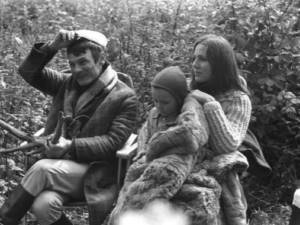
Andrei Tarkovsky and actress Larisa Kizilova. Photo: diddlybop.ru
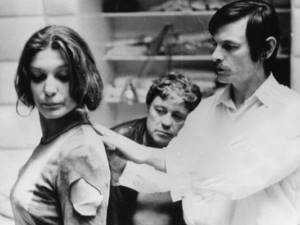
Andrei Tarkovsky and actress Natalya Bondarchuk on the set of Andrei Tarkovsky's feature film "Solaris". Photo: Vladimir Murashko / Cinema Museum, Moscow
Andrei Tarkovsky was married twice. The director's first wife was Irma Rausch. She studied with Tarkovsky at VGIK. Rausch recalled: “Andrei immediately began to look after me, and if he was freed earlier, he would wait for me, and then accompany me to the hostel... I got home late at night. In general, Andrei really scared me with the seriousness of the relationship and his intentions.” In their third year they got married, and soon their son Arseny was born - he was named after Tarkovsky's father.
Irma Rausch starred in “Andrei Rublev”: she played the Little Fool. Famous actresses auditioned for this role: Nina Urgant and Zhanna Bolotova, but Tarkovsky saw her in the film. While working on the film, the director met Larisa Kizilova. She was his assistant. An affair began between them. Andrei Tarkovsky said: “I don’t feel happy when I love a woman. I feel shocked."
In 1970, Tarkovsky's marriage to Irma Rausch broke up. A few months later, the director married Larisa Kizilova. The couple had a son, Andrei. Kizilova also starred in her husband’s film: she played the mistress of a farm in the autobiographical film “Mirror.”
Andrei Tarkovsky often fell in love with the actresses he starred in his films. He had relationships with Natalya Bondarchuk and Margarita Terekhova.
Personal life of Andrei Tarkovsky
While still a student at VGIK, Tarkovsky met a girl named Irma Raush.
It was she who became his first wife. As the director himself admitted, Irma was the first woman who always understood and supported him. She appeared in two films by Andrei Tarkovsky and even received several awards for her film roles, but soon she also began working as a director. From his first marriage, the famous author has a son, Arseny. Tarkovsky's first marriage broke up in 1970. As the director’s friends note, the reason for this was his affair with a young girl, Larisa Kizilova, who worked with him on the film “Andrei Rublev.” Their communication was very strange: all her life she called Tarkovsky “you” and was literally crazy about him. When the director died, she died after him.
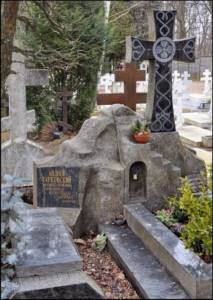
The grave of Andrei Tarkovsky
However, the last years of Tarkovsky’s life were often filled with quarrels with his wife. The reason (or consequence) of this was the director’s extramarital affair with a Norwegian dancer named Berit, who gave birth to the director’s son. It is quite remarkable that the child was born after the death of the great master.
Psychological dramas by Tarkovsky: “Solaris”, “Mirror”, “Stalker”
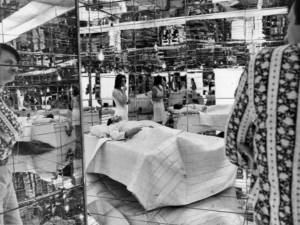
On the set of Andrei Tarkovsky's feature film "Solaris". Photo: tvkinoradio.ru
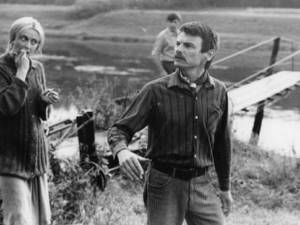
Andrei Tarkovsky and actress Margarita Terekhova on the set of Andrei Tarkovsky's feature film "Mirror". Photo: Vladimir Murashko / Cinema Museum, Moscow
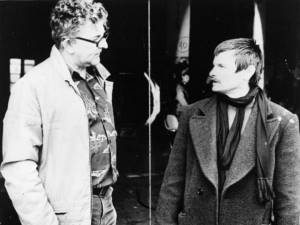
Writer and screenwriter Arkady Strugatsky and Andrei Tarkovsky (right) on the set of Andrei Tarkovsky's feature film "Stalker". Photo: Cinema Museum, Moscow
In 1970, Andrei Tarkovsky began film adaptation of Stanislav Lem's story "Solaris". In the story, astronaut Chris arrives on the mysterious planet Solaris, where Ocean-Brain manipulates the consciousness of astronauts and makes their memories real. Tarkovsky's film is a parable about man and morality, not about space. For the director, this is just a backdrop for the story.
While working on the film, the director met with Lem and shared the script with him, but the writer did not like the text. In his opinion, Tarkovsky made him too philosophical. The writer said: “Solaris” should have become a question about the limits of human knowledge, and not a psychological drama like “Crime and Punishment” in space.”
I would like to prove with my picture that the problem of moral fortitude, moral purity permeates our entire existence, manifesting itself even in areas that at first glance are not related to morality, for example, penetration into space, the study of the objective world.
Andrei Tarkovsky at a meeting with the audience in 1981
The main roles in the film were played by Natalya Bondarchuk and Donatas Banionis. The music was written by composer Eduard Artemyev. To emphasize the contrast between Earth and space, he combined the sounds of nature with an electronic synthesizer.
In 1972, the film premiered at the Cannes Film Festival. Tarkovsky's film received the Grand Prix of the Jury and the FIPRESCI Prize. Soviet viewers saw the film in 1973.
The director dedicated his next film, “Mirror,” to a personal drama. This is an autobiographical film, the main theme of which is the difficult relationship with parents. Through dreams and memories, the past in the film is intertwined with the present. The action takes place in three times at once: before the Great Patriotic War, during and after. At the Mosfilm studio they completely recreated the house and yard in Yuryevets, where the director was evacuated.
Filming began in 1974, but Tarkovsky constantly rewrote the script - often the crew did not know what they would do the next day. Initially, he wanted to insert dialogues with his mother, recorded on a hidden camera, into the film, but then abandoned this idea. The director's young mother was played by actress Margarita Terekhova, and the role of the adult mother was played by Maria Vishnyakova herself. Tarkovsky involved his father, Arseny Tarkovsky, in the work: his poems are heard behind the scenes. The director himself starred in his film, although only his hands were included in the frame.
In 1974, “Mirrors” was shown privately, the film was assigned a second category - it was shown only in a few cinemas. The premiere was attended by composer Dmitry Shostakovich, writers Yuri Bondyrev and Chingiz Aitmatov. Andrei Tarkovsky wrote: “The success of “Mirror” once again convinced me of the correctness of my guess. Maybe cinema is the most personal art, the most intimate. Only the intimate author’s truth in cinema will form a convincing argument for the viewer during perception.”
In 1979, Tarkovsky worked on the film “Stalker” based on the Strugatsky brothers’ story “Roadside Picnic.” The film takes place in the Forbidden Zone, where there is a wish-fulfillment room. In the story, two people - a writer and a professor - go to a mysterious door. They are led by Stalker - a guide. But at the end of the road they refuse to go there. In his diary on January 7, 1975, the director wrote: “It is important for me to establish in this film that specifically human, insoluble, indecomposable thing that crystallizes in the soul of everyone and constitutes its value.” The writers and director worked together on the script, although Tarkovsky was not listed as the screenwriter.
All shots in the film are metaphorical. Tarkovsky referred the viewer to other works of art: the composition of one of the scenes repeats Bosch’s painting “Extraction of the Stone of Folly.” As the story progressed, the director changed the color scheme. In Stalker, initially in black and white, brown, green and blue shades were gradually added.
The film was shot three times. At first, the rough materials were considered defective due to low quality and were destroyed. The second time, when filming was coming to an end, the film was damaged during development in the Mosfilm laboratory. The third time was lucky. In 1980, at the Cannes Film Festival, the film received the Ecumenical Jury Prize, an independent award from Christian film masters.
Brief biography of Andrei Tarkovsky
The genius of cinematography was born on April 4, 1932. The director’s homeland was the village of Zavrazhye, Ivanovo region. The boy's family was creative and famous. Father, Arseny Tarkovsky, was known as a famous poet. The mother came from a noble family of the Dubasovs. She had a higher education as a writer. In 1934, the family moved to Moscow, where in the fall Andrei had a sister, Marina. In 1941, the father went to the front, and the mother and two children returned to Zavrazhye, where they stayed until 1943.
Until 1949, Andrei studied at a comprehensive school. He was seriously interested in music and art. In 1951 he entered the Institute of Oriental Studies of the Russian Academy of Sciences at the Arabic Faculty. However, in 1952 he left the university and got a job as a collector on an expedition to the Krasnoyarsk Territory, where he wandered through the taiga for a year. After returning to Moscow, in 1954, he decided to enroll in the directing department at VGIK. He studied in the group of Mikhail Romm.
Work in the USSR
Tarkovsky’s debut work was the film “The Killers” (1956). At VGIK I met Andrei Konchalovsky and together with him wrote scripts for films:
- “Antarctica is a distant country”;
- "Skating rink and violin."
In 1962 he directed the film “Ivan’s Childhood,” for which he received a prize at the Venice Film Festival. Over the next 17 years he made 4 more cult films:
- "Andrey Rublev";
- "Mirror";
- "Solaris";
- "Stalker"
Over these years, Tarkovsky experienced the full power of Soviet censorship. He was harassed and his films were criticized. In France, people stood in line for 2 weeks for tickets for the film “Mirror”. And in the USSR the painting was hidden “on a shelf.” He endured all this painfully.
Quote: “The purpose of art is to prepare a person for death, to plow and loosen his soul, to make it capable of turning to good” (Andrei Tarkovsky. “Imprinted Time”)
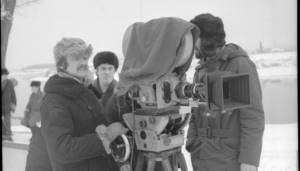
Fig.3 Tarkovsky on the set
Life in exile
In 1980, Tarkovsky received an offer to shoot the film “Nostalgia”. The customer was Italian cinema. Andrei agreed and together with his wife went on a business trip to Italy. Work on the film lasted 3 years. During this time, material was accumulated for the documentary film “Time of Travel,” which was released in 1982.
After a long stay abroad, the couple decided not to return to the USSR. In 1986, Andrei Tarkovsky presented a new film, “Sacrifice,” filmed in Sweden. The film is dedicated to nuclear war. The day after the premiere, the 4th power unit exploded in Chernobyl. Society rated the picture as a prediction.
A little earlier, 6 years ago, in the film “Stalker” Tarkovsky also predicted a nuclear post-apocalypse. And to one of the decorations of “Stalker” he added a calendar with a mark of December 28, which will be the last day of his life. He had such prophetic properties.
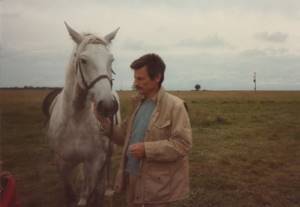
Rice. 4 Work on the film “Sacrifice”
Friends, acquaintances
Tarkovsky had been friends with Andrei Konchalovsky since his student years. But gradually their views and paths diverged. All the film studio workers lived in the Mosfilm house, where the Tarkovsky family lived, which greatly irritated Andrei. He tried to retire to a private house in the village of Myasnoye.
After the director’s death, many declared their former friendship with him. But Konchalovsky claims that Andrei tried to avoid acquaintances. He was a genius, and he needed only one thing from people - constant admiration. Of course, Andrei had supporters and friends, such as: Vyacheslav Shmyrov, Marlen Khutsiev, Vasily Shukshin, Pyotr Todorovsky, Evgeniy Tashkov, Andrei Eshpai and others.
Personal life
Tarkovsky was married twice. First wife Irma Raush, classmate of Andrei Arsenievich. The marriage produced a son, Arseny, named after his grandfather. He graduated from medical university and works as a doctor. The second marriage took place with Larisa Kizilova, an assistant on the film crew in the film “Andrei Rublev”. The marriage produced a son, Andrei. Currently he lives in France and heads the Tarkovsky Foundation.
At the same time, the director was in love and novels accompanied him throughout his life. Among the favorites: Valentina Malyavina, Margarita Terekhova, Natalya Bondarchuk, Donatella Ballivo and others. The last muse was Inger Persson, costume designer on the set of the film “Sacrifice.” As a result of the affair, a boy, Alexander, was born. He now lives in Norway. Andrei Tarkovsky never saw him.
Video. A film about Andrei Tarkovsky from the series “How the Idols Left,” released on the DTV channel in 2021.
